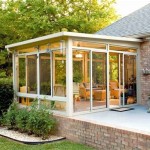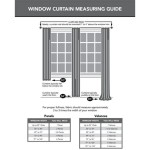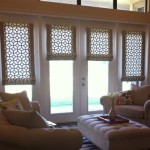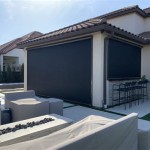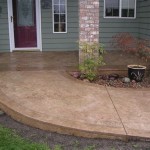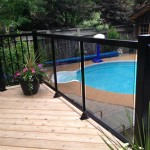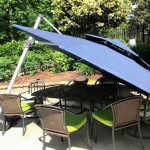Transforming Your Pool Area with Patio Wall Blocks: Creating an Outdoor Paradise
The allure of an outdoor pool often extends beyond the water itself. The surrounding environment plays a pivotal role in establishing a relaxing and aesthetically pleasing oasis. Patio wall blocks offer a versatile and practical solution for defining spaces, adding visual interest, and enhancing the overall functionality of your pool area. These interlocking units provide a durable and customizable option for constructing retaining walls, seating areas, outdoor kitchens, and other features that contribute to a stunning backyard retreat.
Selecting the right patio wall blocks is crucial for achieving the desired look and ensuring long-term performance. Numerous factors should be considered, including the style and color of the blocks, their size and shape, and the materials used in their construction. Proper planning, preparation, and installation are essential for a successful project that will withstand the elements and provide years of enjoyment.
This article will explore the key aspects of incorporating patio wall blocks into your poolside landscape, providing information and guidance for creating an outdoor paradise around your pool.
Understanding the Versatility of Patio Wall Blocks
Patio wall blocks offer a wide range of possibilities for enhancing your pool area. Their modular design allows for creating various structures and features, adapting to different styles and functional needs. The flexibility of these blocks makes them an ideal choice for both simple enhancements and complex landscaping projects.
Retaining walls are a common application for patio wall blocks, particularly in yards with uneven terrain. These walls serve to level slopes, create terraces, and prevent soil erosion. By strategically incorporating retaining walls, you can establish distinct zones within your pool area, such as a raised sunbathing deck or a secluded seating area.
Beyond retaining walls, patio wall blocks can be used to build freestanding walls that act as privacy screens or windbreaks. These walls can be customized to varying heights and lengths, providing a sense of enclosure and seclusion. Integrating plants or decorative elements into the wall design can further enhance its aesthetic appeal.
Built-in seating is another popular application for patio wall blocks. Creating benches or banquettes around the pool allows for comfortable lounging and socializing. These seating areas can be customized to match the style of the pool and surrounding landscape, providing a cohesive and inviting space.
Outdoor kitchens and bars are becoming increasingly popular additions to poolside areas. Patio wall blocks can be used to construct the base for these features, providing a durable and aesthetically pleasing foundation. Integrating storage compartments and countertops into the design can create a functional and stylish outdoor cooking and entertaining space.
Fire pits and fireplaces are a great way to extend the usability of your pool area into the cooler months. Patio wall blocks can be used to build a custom fire pit or fireplace, creating a focal point for gathering and relaxation. The warmth and ambiance of a fire can transform your poolside area into a cozy and inviting retreat.
Key Considerations for Selecting Patio Wall Blocks
Choosing the right patio wall blocks is essential for achieving the desired look and ensuring the longevity of your project. Several factors should be carefully considered before making a selection.
Style and Aesthetics: Patio wall blocks come in a variety of styles, colors, and textures. Consider the overall design of your pool area and select blocks that complement the existing architecture and landscape. Options range from traditional brick-style blocks to contemporary smooth-faced blocks. The color of the blocks should harmonize with the surrounding environment, creating a cohesive and visually appealing space. The texture of the blocks can add visual interest and depth to the design. Consider using a combination of different styles and colors to create a unique and personalized look.
Material and Durability: Patio wall blocks are typically made from concrete or natural stone. Concrete blocks are a cost-effective and durable option, while natural stone blocks offer a more natural and rustic aesthetic. The climate in your area should be considered when selecting the material. In areas with harsh winters, choose blocks that are resistant to freeze-thaw cycles. The durability of the blocks will determine their lifespan and resistance to wear and tear. Choose blocks that are designed to withstand the elements and maintain their appearance over time. The weight of the blocks should also be considered, particularly for larger projects. Heavier blocks may require specialized equipment for installation.
Size and Shape: Patio wall blocks are available in various sizes and shapes. The size of the blocks will determine the ease of installation and the overall appearance of the finished project. Smaller blocks are easier to handle and maneuver, while larger blocks can create a more substantial and imposing look. The shape of the blocks will affect the design possibilities and the structural integrity of the wall. Some blocks are designed to interlock, providing a secure and stable connection. Others are designed to be stacked and mortared together. The shape of the blocks should also be considered in relation to the desired contours of the wall. Some blocks are designed to create curved walls, while others are better suited for straight walls.
Cost: The cost of patio wall blocks can vary depending on the material, style, size, and shape. Before making a purchase, establish a budget and research the prices of different options. Factor in the cost of installation, including labor and materials. It may be more cost-effective to hire a professional contractor for larger or more complex projects. Consider the long-term cost of maintenance and repairs. Choose blocks that are durable and require minimal upkeep to save money in the long run.
Permeability: For certain applications, permeable pavers or blocks may be a desirable choice. These allow water to drain through the surface, reducing runoff and helping to manage stormwater. This can be particularly beneficial around a pool area to prevent puddling and erosion.
Installation Best Practices for Patio Wall Blocks
Proper installation is crucial for the stability, longevity, and aesthetic appeal of your patio wall block project. Whether you choose to tackle the project yourself or hire a professional, understanding the fundamental installation steps is essential.
Planning and Preparation: Before you begin, carefully measure and mark the area where you plan to install the wall. Consider any underground utilities or obstacles that may need to be avoided. Obtain any necessary permits required by your local municipality. Prepare the foundation by excavating the soil and creating a level base. A well-prepared foundation is essential for the stability and longevity of the wall. Ensure that the base is compacted and properly graded to prevent settling and drainage issues. Consider using a layer of gravel or crushed stone to improve drainage.
Base Layer Installation: The first layer of blocks should be carefully placed on the prepared base. Ensure that the blocks are level and aligned correctly. Use a level to check the alignment and make any necessary adjustments. The first layer is the foundation for the entire wall, so it is crucial to ensure that it is properly installed. Backfill behind the first layer with gravel or crushed stone to provide support and drainage. Compact the backfill to prevent settling.
Stacking and Alignment: Subsequent layers of blocks should be stacked on top of the first layer, ensuring that they are properly aligned. Use a string line or level to maintain a consistent alignment. Interlock the blocks according to the manufacturer's instructions. Some blocks require the use of adhesive or mortar to create a secure bond. Stagger the joints between the blocks to create a stronger and more stable wall. This will help to prevent cracking and shifting over time.
Backfilling and Drainage: As you build the wall, backfill behind the blocks with gravel or crushed stone. This will provide support and drainage. Compact the backfill to prevent settling. Install drainage pipes or weep holes to allow water to escape from behind the wall. This will help to prevent hydrostatic pressure from building up and damaging the wall. Proper drainage is essential for the longevity of the wall.
Capping and Finishing: Once the wall is complete, install capping stones to provide a finished look and protect the top of the wall from the elements. Secure the capping stones with adhesive or mortar. Clean up any excess adhesive or mortar. Inspect the wall for any cracks or gaps and repair them as needed. Consider adding decorative elements, such as plants or lighting, to enhance the aesthetic appeal of the wall. Proper finishing touches will enhance the overall appearance of the wall and protect it from the elements.
Professional Installation: For larger or more complex projects, consider hiring a professional contractor. A professional contractor will have the experience and expertise to ensure that the wall is properly installed and will last for many years. They will also be able to handle any unforeseen challenges that may arise during the installation process. While professional installation may be more expensive, it can be a worthwhile investment in the long run.
Adding patio wall blocks to your pool area is a strategic investment in both aesthetics and functionality. By carefully considering the options available, selecting the right materials, and following proper installation techniques, you can transform your pool area into a stunning outdoor paradise that will be enjoyed for years to come.

Our Small Backyard Pool The Cost Process More Young House Love

Sunken Patio Using Retaining Walls To Expand Outdoor Livingroom Traditional Landscape Minneapolis By Allan Block Wall And Systems Houzz

20 Beautiful Hillside Pool Ideas With Retaining Walls Nikki S Plate

Pool Landscape To Beat The Henderson Heat
Pool Privacy Ideas 10 Ways To Create Your Own Private Paradise Yahoo Sports

Our Small Backyard Pool The Cost Process More Young House Love

Backyard Paradise With Entertaining In Mind Red Landscaping

Our Small Backyard Pool The Cost Process More Young House Love

Stone Patio With Infinity Pool Waterfall And Fireplace 2024 Ultimate Outdoor Awards

Pool Patio Ideas 15 Ways To Create A Fabulous Poolscape
Related Posts

